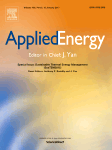Faculty Position in Environmental Science and Engineering at the Ecole polytechnique fédérale de Lausanne (EPFL)
EPFL's School of Architecture, Civil and Environmental Engineering (ENAC)invites appli¬cations for aFaculty position in the Institute of Environmental Engineering. Appointment at all levels (i.e. Tenure Track-, Associate-, and Full Professor) will be considered.
The Institute of Environmental Engineering currently covers a diverse portfolio ofresearch and teaching in (non-exhaustive list): climate change adaptation, biogeochemical cycles, cryosphere,hydrology, hydrodynamics, limnology, precipitation, water quality, bioremediation, ecotoxicology, air quality, renewable energy, city and landscape monitoring/sustainability, ecology, and ecosystem dynamics. These research themes are underpinned by technical innovations and developments in, for example:remote and in situsensing, fieldrobotics (water, land, air), numericalmodelling, as well as cutting-edge chemical, genomic, proteomic, and isotope analysis facilities.Our institute also hosts the newly established Swiss Polar Institute, which coordinates and supports research in Polar and other extreme environments, including the Alps.
In this context,we seek a candidate who can develop and lead aninternationally recognized research programand strengthen our curriculum within the broadly defined area of Environmental Science and Engineering, comple¬men¬ting and integrating with existing groups. The successful candidate will be committed to excellence in undergraduate/graduate-level teaching as well as supervision of PhD students and postdocs.
EPFL offersinternationally competitive start-up resources,salaries, and benefits.
With its main campus located in Lausanne, Switzerland, EPFL is a dynamically growing and well-funded institution fostering excellence and diversity. It has a highly international campus at an excep¬tionally attractive location boasting first-class experimental and computational infrastructure.As a technical university covering essentially the entire palette of engineering and science, EPFL offers a fertile environment for research collaboration between different disciplines. The EPFL environment is multi-lingual and multi-cultural, with English serving as a common interface.
To apply, please follow the application procedure on academicjobsonline.org/ajo/jobs/8558
The following documents are requested in PDF format: cover letter including a statement of motivation, curriculum vitae, publications list, statement of research and teaching interests as well as the names and addresses, including emails, of at least three references (may be contacted at a later stage).
Screening will start on February1st, 2017 and the search will continue until the positionis filled.
Further enquiries should be made to the Chair of the Search Committee:
ProfessorAnders Meibom
Director of the Environmental Engineering Institute
School of Architecture, Civil and Environmental Engineering, EPFL-ENAC
E-mail: searchenvironmental@epfl.ch
For additional information on EPFL, please consult: epfl.ch or enac.epfl.ch
EPFL aims to increase the presence of women amongst its faculty, and qualified female candidates are strongly encouraged to apply.

























